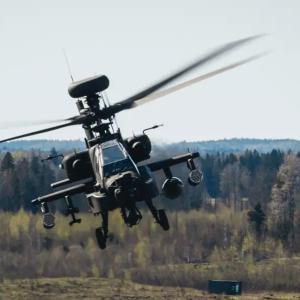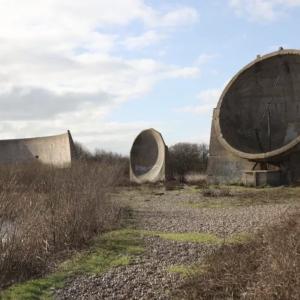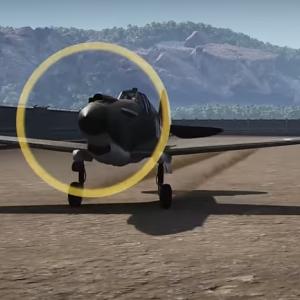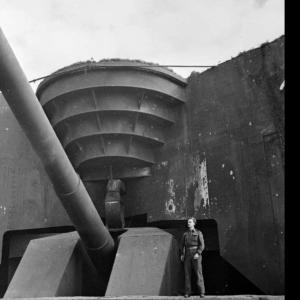
Apache Attack Helicopter
The Apache Attack Helicopter, formally known as the Boeing AH-64 Apache, is one of the most advanced and formidable rotary-wing aircraft in military aviation history. Originally developed in the United States, the Apache was conceived as a highly survivable and lethal platform capable of conducting precision strikes, armed reconnaissance, and close air support for ground forces. The aircraft was designed to operate day or night, in any weather conditions, and in hostile environments where heavy anti-air defenses might be encountered.
The development of the Apache began in the early 1970s, a time when the U.S. Army sought a replacement for the AH-1 Cobra. The new helicopter was expected to provide increased survivability, more powerful weapons systems, and greater battlefield versatility. The competition was narrowed down to two contenders: Bell Helicopter’s Model 409 and Hughes Helicopters’ Model YAH-64. After a rigorous evaluation, the U.S. Army selected the YAH-64 in 1976. Hughes Helicopters, a division of Hughes Aircraft, was responsible for the initial design and development. The helicopter made its first flight on September 30, 1975. After years of refinement and testing, it entered service with the U.S. Army in 1986.
Production of the Apache has seen several corporate changes. Hughes Helicopters was acquired by McDonnell Douglas in 1984, which continued the development and production of the aircraft. Later, in 1997, McDonnell Douglas merged with Boeing, transferring the responsibility for the Apache line to Boeing Defense, Space & Security. The primary manufacturing facility for the Apache has been the Boeing plant in Mesa, Arizona. Over time, the aircraft has evolved through several variants, the most significant being the AH-64A, AH-64D Longbow, and the latest version, the AH-64E Guardian. Each variant has introduced upgraded avionics, more advanced targeting systems, improved engines, and increased interoperability with modern battlefield networks.
The Apache’s combat record is extensive and distinguished. Its first significant combat deployment came during the U.S. invasion of Panama in 1989, but its most well-known early use was during Operation Desert Storm in 1991. In the opening hours of the Gulf War, Apaches were used to destroy Iraqi radar sites and air defenses, paving the way for coalition airstrikes. Their ability to operate at low altitude and deliver pinpoint strikes made them invaluable in both urban and desert warfare. During the Iraq War, which began in 2003, Apache helicopters were once again heavily relied upon for close air support, escort missions, and hunting insurgent targets in both rural and densely populated areas.
In Afghanistan, the Apache played a crucial role in counterinsurgency operations. Its advanced sensors and night vision systems made it a key tool for identifying and engaging enemy combatants hidden among mountainous terrain or civilian structures. The aircraft’s endurance and firepower enabled it to support ground troops in real time, often altering the outcome of firefights. The Apache was also deployed in Libya during the 2011 NATO intervention and has been used in various smaller conflicts and peacekeeping missions across the globe. Its presence continues to serve as both a deterrent and a lethal force multiplier in modern warfare.
The AH-64 Apache is outfitted with an impressive array of armaments that make it a versatile and deadly platform. Its primary weapon is the M230 30mm chain gun, mounted beneath the fuselage on a flexible turret. This cannon can be slaved to the pilot’s helmet sight or the copilot-gunner’s Target Acquisition and Designation System (TADS), allowing the gun to be aimed simply by looking at the target. The Apache can also carry up to sixteen AGM-114 Hellfire missiles, which are laser-guided or radar-guided anti-tank weapons capable of destroying armored vehicles, bunkers, and other high-value targets with pinpoint accuracy.
In addition to the Hellfire missiles, the Apache is equipped with Hydra 70 rocket pods. These unguided rockets provide a powerful area suppression capability and can be used against personnel, light vehicles, and structures. More recently, newer variants of the Apache have been tested and equipped with air-to-air Stinger missiles, extending its defensive capabilities. The AH-64E Guardian variant can also carry advanced data link systems and is equipped to control drones, giving pilots increased situational awareness and the ability to conduct reconnaissance without exposing the helicopter to enemy fire. The Longbow radar system, a prominent dome above the rotor on certain variants, allows the Apache to detect and prioritise up to 128 targets at once and engage them quickly, even in poor weather or obscured visibility.
Globally, the Apache has become a highly sought-after weapon system, and many allied countries have incorporated it into their military forces. The United Kingdom was one of the earliest adopters outside of the United States, developing a customised version called the Apache AH1, which was assembled by Westland Helicopters (now part of Leonardo) and based on the AH-64D model. These helicopters have been used extensively by the British Army in Afghanistan and Libya.
Other major operators of the Apache include Israel, which has used its Apaches in various operations in Gaza and southern Lebanon. The Israeli Air Force relies on the platform for both reconnaissance and targeted strikes against enemy infrastructure. Saudi Arabia, the United Arab Emirates, and Qatar also operate Apaches, and these helicopters have been deployed in the conflict in Yemen. India is another significant user, having purchased the AH-64E Guardian variant. Indian Apaches are based in the north of the country, positioned strategically along borders with China and Pakistan, highlighting their importance in conventional and asymmetric defense roles.
Japan, South Korea, the Netherlands, Greece, Egypt, Indonesia, and Kuwait are also among the countries that field the Apache. Each operator typically configures the helicopter to suit its specific operational needs, with differences in sensors, communications equipment, and weapon systems. As of the mid-2020s, more than 2,500 Apache helicopters have been built, and Boeing continues to deliver upgraded versions to both the U.S. Army and foreign customers.
With its rugged design, exceptional firepower, and ability to coordinate with modern battlefield systems, the Apache has solidified its role as the premier attack helicopter of the late 20th and early 21st centuries. Despite increasing competition and the emergence of newer platforms like unmanned combat drones, the Apache remains relevant due to ongoing upgrades and its proven battlefield effectiveness. The continued investment in the AH-64E variant and interest from NATO and non-NATO countries suggest that the Apache will remain a key component of global air forces for decades to come.










